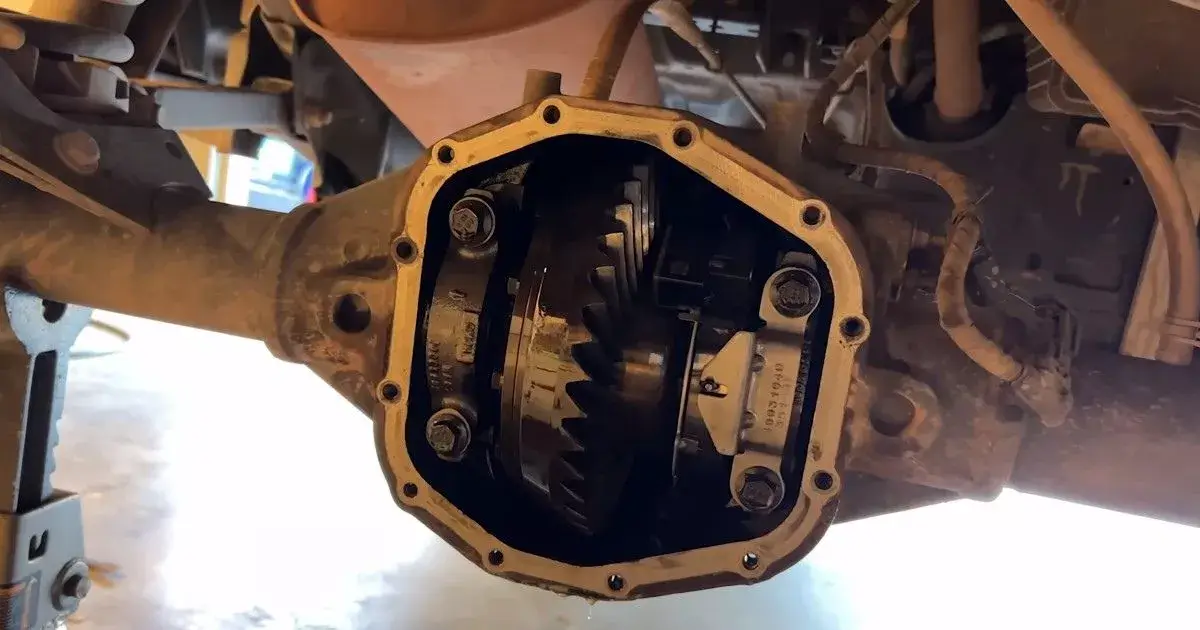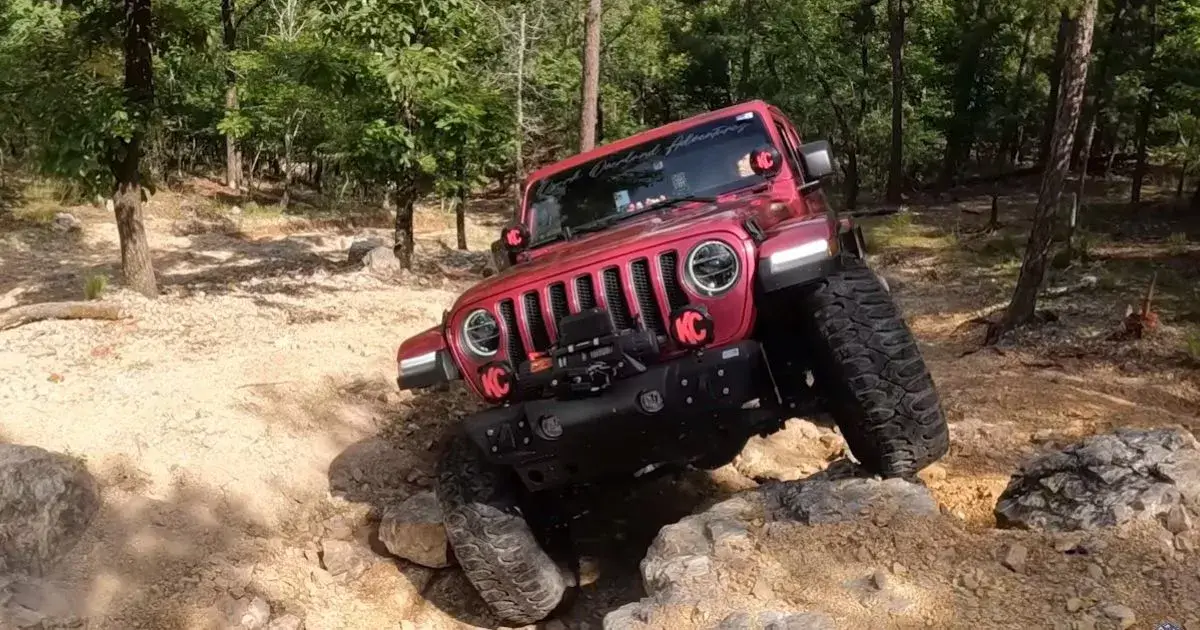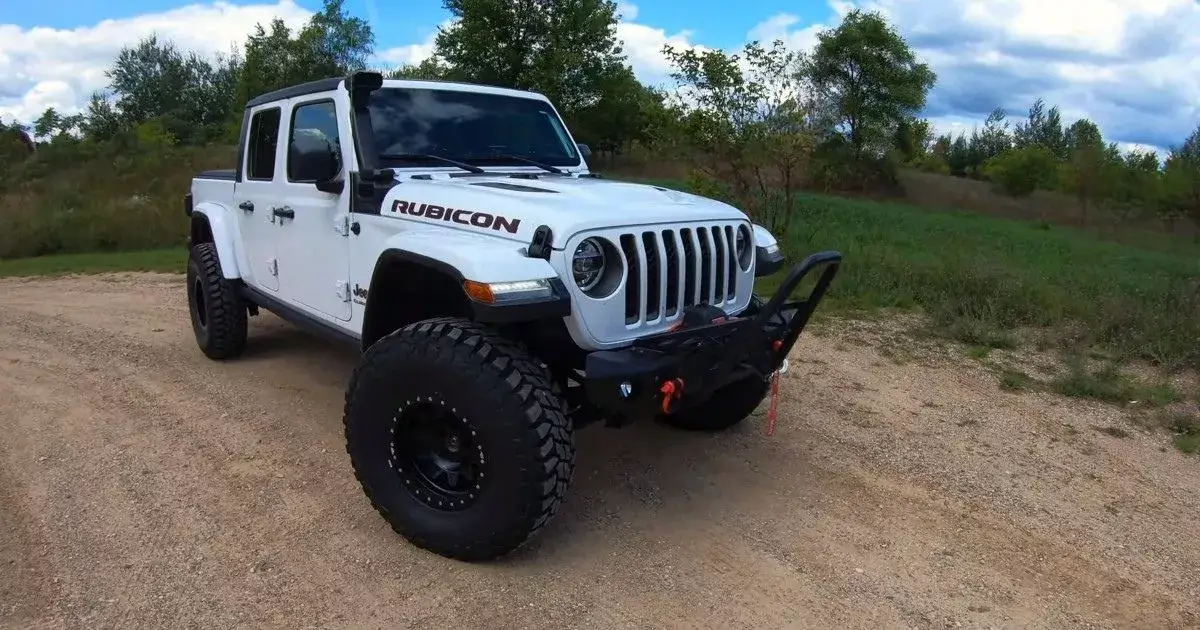Yes, you can regear your Jeep with 35s.
Regearing your Jeep is necessary when you upgrade to larger tires. The larger the tire, the more resistance it creates, resulting in a loss of power and acceleration. By regearing, you can maintain your Jeep’s performance and avoid damage to its transmission and engine.
In this article, we’ll discuss everything you need to know about regearing, including what it means, why it’s important, and how to do it. We’ll also share some helpful tips to help you choose the best gears for your Jeep and ensure a smooth ride.

Regearing for 35s: Vital for Jeep
Regearing is an essential consideration for Jeep owners who upgrade to 35-inch tires. Your Jeep’s differential gear ratio determines how much torque is applied to the wheels, and with larger tires, the gear ratio needs to be adjusted to compensate for the added weight and size.
Failing to regear your Jeep when switching to 35s can result in sluggish performance, reduced fuel efficiency, and additional wear and tear on the vehicle’s transmission and engine.
Regearing your Jeep to match the larger tires will improve its overall performance and ensure a smoother, more efficient ride. Therefore, regearing is highly important for Jeeps with 35-inch tires.
Best Gear Ratio for 35s on Jeep
The recommended gear ratio for a Jeep with 35-inch tires depends on the vehicle’s model and engine size. In general, a gear ratio of 4.88 or 5.13 is recommended to compensate for the added weight and size of the larger tires.
The gear ratio determines how much torque is applied to the wheels, and adjusting it to match the tire size is essential for maintaining the vehicle’s optimal performance, fuel efficiency, and handling.
Regearing to the appropriate gear ratio will ensure that the larger tires are properly accommodated and that the vehicle maintains optimal performance and efficiency. Therefore, it is crucial to follow the recommended gear ratio for 35s on a Jeep to achieve the best results.
Advantages of Regearing 35s
Regearing a Jeep with 35-inch tires can offer several benefits for off-road enthusiasts.
- Regearing optimizes torque and power, which means your Jeep can climb steeper hills, traverse rough terrain, and accelerate more smoothly
- Larger tires can cause reduced fuel efficiency, but regearing can help restore lost efficiency, saving you money on gas in the long run
- By reducing wear and tear on your transmission and engine, regearing can help prevent costly repairs and keep your Jeep running smoothly for longer
- With improved acceleration and towing capacity, your Jeep can take on more challenging off-road adventures
- Regearing can enhance the overall driving experience by making your Jeep more responsive and enjoyable to drive on and off the road.

Do I Need to Regear for 35S Jeep Gladiator
If you’re planning on running 35-inch tires on your Jeep Gladiator, you might need to regear. The reason being is that larger tires put more strain on your drivetrain, and the stock gear ratios might not be ideal for off-roading.
Regearing will give you lower gears which will provide more torque and power when climbing hills or going over obstacles. It’s not a necessary mod if you’re just sticking to mild trails, but if you want to do some serious off-roading, it’s something to consider.
How Much Does It Cost to Regear a Jeep
If you’ve ever wondered how much it costs to regear a Jeep, wonder no more! Here’s a breakdown of the typical costs associated with this process.
Labor: The cost of labor will vary depending on the shop you take your Jeep to. However, you can expect to pay between $500 and $700 for labor alone.
Parts: The parts needed for a regear job include new gears, bearings, seals, and sometimes an axle shaft or two. The cost of these parts will vary depending on the type of Jeep you have and the quality of the parts used. However, you can expect to pay between $800 and $1200 for parts.
Total Cost: When all is said and done, you can expect to pay between $1300 and $2000 to have your Jeep professionally regeared. Of course, this cost could be higher or lower depending on the factors mentioned above.
How Much Does It Cost To Regear My Jeep JK?
If you own a Jeep JK, you may have considered regearing it at some point. After all, regearing can improve your Jeep’s performance and make it better suited for off-roading. But what does regearing entail, and how much does it cost?
The cost of regearing depends on a few factors including which gears you select and whether you plan on doing the work yourself or hiring someone else to do it for you. For example, installing new ring and pinion gears typically costs between $500-$700 per axle depending on the quality of the gear set chosen.
If adding an entirely new axle assembly is required, that cost could obviously be much higher. If opting for professional installation, except labor rates ranging from $100-$200 per hour with most jobs taking 4-8 hours total. Therefore, a complete professional install could cost upwards of $2000 or more. However, many enthusiasts enjoy performing this type of work themselves, which obviously saves quite a bit of money in labor costs.
How Long Does It Take to Regear a Jeep
If you’ve ever wondered how long it takes to regear a Jeep, wonder no more! We’ll give you a quick rundown of the process so you can be prepared for your next off-roading adventure. The first thing you’ll need to do is remove the old gears from your Jeep.
This includes taking out the axles, removing the differential, and unbolting the driveshaft. Once everything is removed, you’ll need to clean all of the parts and inspect them for wear and tear.
Next, it’s time to install the new gears. This involves putting the new axles in place, bolting on the differential, and attaching the driveshaft. The whole process can take anywhere from 4-6 hours, depending on your experience level and whether or not you have help.
Once everything is installed, it’s time to test out your new setup! Take your Jeep for a spin around town or out on the trails and see how it handles. With properly installed gears, you should notice an improvement in performance and fuel economy.

FAQs
Can You Run 35S on Stock Gears?
If you’re looking to run 35-inch tires on your truck or Jeep, you might be wondering if you can get away with using stock gears. The answer is maybe, but it depends on a few factors. For starters, let’s talk about what stock gearing is.
Most trucks and Jeeps come from the factory with a 3.73:1 gear ratio. This means that for every 3.73 rotations of the driveshaft, the axle turns once. Now, this number can vary slightly depending on your vehicle and transmission combo, but for the most part, it’s going to be in that ballpark.
So, what does this have to do with running 35s? Well, when you increase the size of your tires, you also increase their circumference (the distance around the tire). This effectively makes your tires taller and changes your final drive ratio.
What is the Best Gear Ratio for a Jeep With 35 Tires?
The best gear ratio for a Jeep with 35-inch tires is 4.56:1. This gear ratio will provide the Jeep with optimal power and torque while also giving it the ability to climb hills and mountains with ease.
What Happens If You Don’T Regear Your Jeep?
If you don’t regear your Jeep, you will eventually start to experience some issues. The most common issue is that your Jeep will start to crawl along at low speeds, and it will feel like the engine is working overtime. This is because the gears are no longer able to properly engage with each other, and they are slipping.
This can lead to decreased fuel economy and a loss of power. In extreme cases, it can even cause damage to the engine or transmission. If you notice any of these symptoms, it’s time to get your Jeep regeared.
Can You Run 35S on Stock Jk Gears?
If you’re thinking about putting 35-inch tires on your Jeep JK Wrangler, you might be wondering if you can get away with using the stock gears. The answer is maybe, but it depends on a few factors. If you live in a place with mostly flat terrain and don’t do much rock crawling or off-roading, you might be able to get by with the stock 3.21 gears.
But if you do any type of off-roading or live in an area with lots of hills, you’ll probably want to upgrade to at least 4.10 gears. The reason for this is that larger tires require more power to turn over, so lower gears help compensate for that by giving the engine more torque. If your Jeep is already having trouble making it up hills with the stock tires, adding bigger ones will only make things worse.
So, can you run 35s on stock JK gears? It’s possible, but not ideal. If you do a lot of off-roading or live in an area with hilly terrain, upgrading to 4.10 or higher gears is a good idea.
Final Words
If you have upgraded your Jeep with 35-inch tires, it is highly recommended to regear your vehicle. By regearing to the recommended gear ratio of 4.88 or 5.13 (depending on your Jeep’s model and engine size), you can improve overall performance, towing capacity, and off-road capabilities.
Moreover, regearing can reduce wear and tear on the engine and transmission, leading to fewer repairs and a longer component lifespan. With these benefits in mind, regearing your Jeep with 35s is a vital investment for any off-road enthusiast.
So, make sure to consult with a professional mechanic to get the best gear ratio and enjoy a smoother, more efficient driving experience on and off the road.

